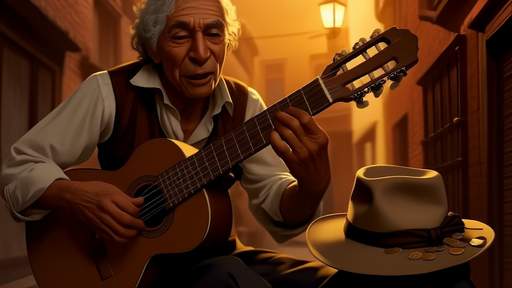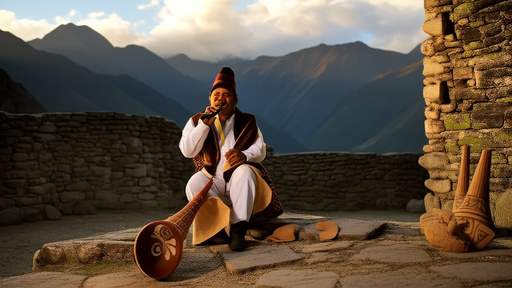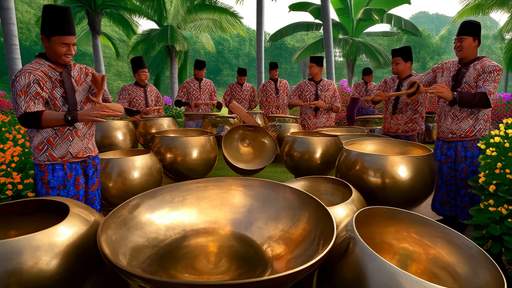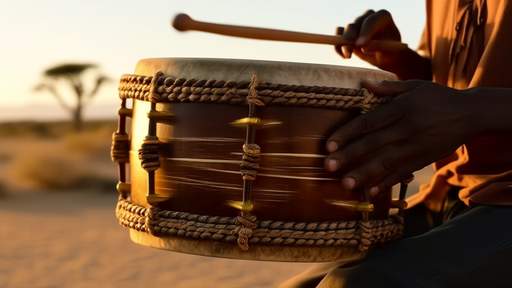The haunting melodies of the Peruvian ocarina echo through the Andes, carrying whispers of an ancient civilization that once ruled these mountains. These unassuming clay vessels, often shaped like animals or deities, served as sacred conduits between the physical and spiritual worlds in Inca society. Today, a dedicated group of archaeologists, musicians, and craftsmen are piecing together fragments of history to revive the authentic soundscape of pre-Columbian rituals.
Rediscovering Lost Harmonics
Deep in the vaults of Lima's Museo Nacional de Arqueología, Antropología e Historia del Perú, curator Dr. Elena Quispe carefully turns over a ceramic ocarina recovered from Machu Picchu's Temple of the Sun. The instrument bears intricate geometric patterns corresponding to celestial events. "What most people don't realize," she explains, "is that these weren't children's toys but precision-tuned ritual objects. The Incas encoded astronomical knowledge into their music."
Modern spectrographic analysis has revealed surprising sophistication in these ancient wind instruments. Craftsmen intentionally created subtle imperfections in the clay to produce unique harmonic textures that modern manufacturing cannot replicate. When played in certain underground chambers at specific times of year, researchers believe the ocarinas generated resonant frequencies that enhanced ceremonial trance states.
The Clay That Remembers
In a small workshop near Cusco, fourth-generation ceramist Tomás Mayta kneads local clay with his bare feet, just as his ancestors did. "The earth here contains volcanic ash from millennia past," he says, pressing thumbprints into a jaguar-shaped ocarina. "This clay remembers the old songs." His revival of pre-Hispanic firing techniques - using llama dung as fuel and alternating oxygen levels - produces the distinctive porous texture crucial for authentic sound.
Ethnomusicologists have identified at least seventeen distinct ocarina types used in Inca ceremonies, each corresponding to different deities and natural forces. The rain invocation ocarinas, for example, consistently feature seven finger holes representing the Pleiades star cluster, whose appearance marked the coming of seasonal rains. Modern reproductions must account for these cosmological connections to achieve true authenticity.
Bridging Centuries Through Sound
At dawn in the Sacred Valley, musicologist Renzo Alva tests a newly reconstructed ceremonial ocarina based on fragments found at Ollantaytambo. The instrument's plaintive cry carries across the terraces, startling a condor into flight. "When you play these in their original context," Alva observes, "you understand how the Incas conceived of music as architecture - sound shaping space."
Contemporary Andean musicians face unique challenges in adapting these ancient instruments for modern performance. Traditional ocarinas were designed to be played in specific acoustic environments - mountaintops, stone chambers, or beside rushing rivers. Concert halls demand subtle modifications while preserving essential tonal qualities. Some performers now collaborate with acoustic engineers to recreate these natural reverberations electronically.
Echoes in the Digital Age
The revival has sparked unexpected interest beyond academic circles. A viral video of a teenage ocarina player performing at 14,000 feet on Rainbow Mountain garnered millions of views, introducing the ancient instrument to Generation Z. Meanwhile, experimental composers are incorporating digitized ocarina samples into electronic music, creating fusion pieces that would astonish the Inca priests who first breathed life into these clay vessels.
As night falls over the ruins of Sacsayhuamán, a circle of musicians plays reconstructed ceremonial ocarinas beneath the same stars that guided their ancestors. The melodies weave through ancient stonework, momentarily erasing five centuries. In these notes persist the unbroken thread of cultural memory - the enduring voice of a civilization that still speaks through clay and breath.

By /Jun 6, 2025

By /Jun 6, 2025

By /Jun 6, 2025

By /Jun 6, 2025

By /Jun 6, 2025

By /Jun 6, 2025

By /Jun 6, 2025

By /Jun 6, 2025

By /Jun 6, 2025

By /Jun 6, 2025

By /Jun 6, 2025

By /Jun 6, 2025

By /Jun 6, 2025

By /Jun 6, 2025

By /Jun 6, 2025

By /Jun 6, 2025

By /Jun 6, 2025

By /Jun 6, 2025

By /Jun 6, 2025

By /Jun 6, 2025